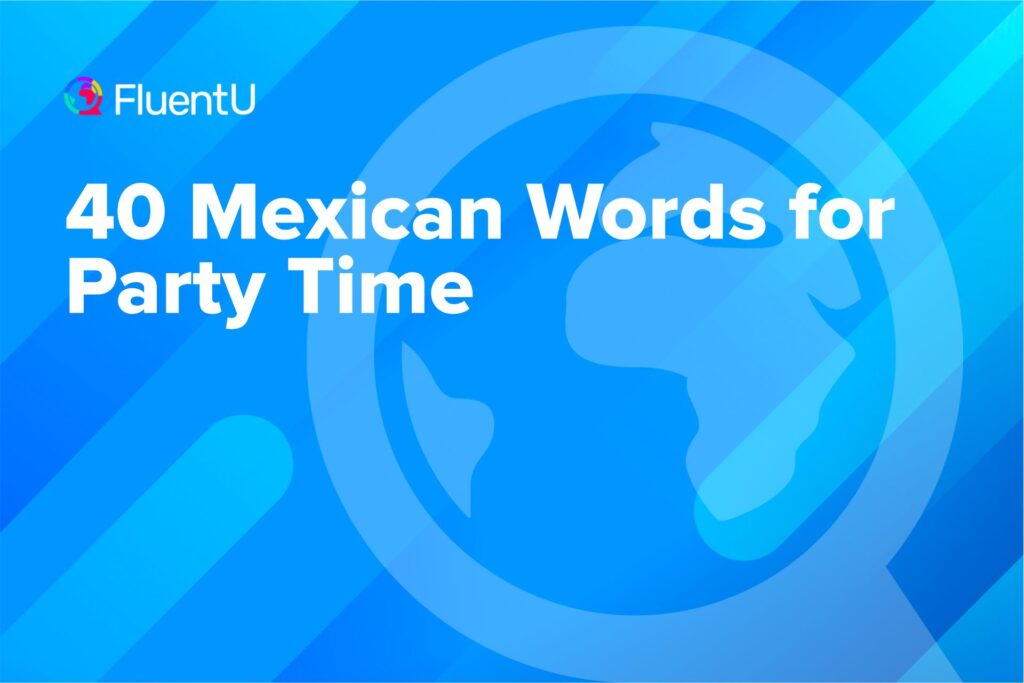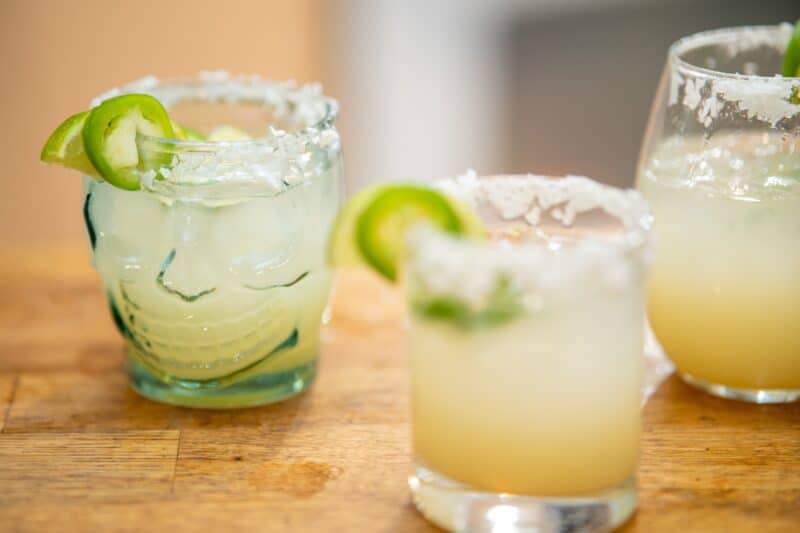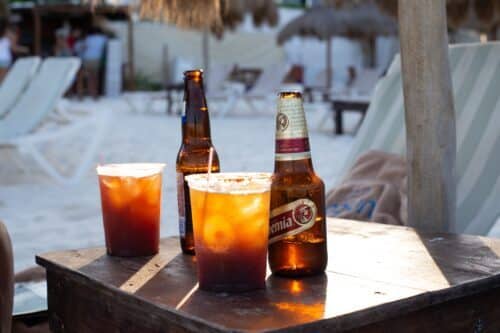40 Mexican Words for Party Time

If you’re going to a Mexican party, you can expect to hear lot of chit-chat that’ll go completely over your head. Mexican party expressions—like most of our slang—can be somewhat confusing if you’ve been learning a different Spanish variety.
So if you’re headed to Mexico and love having a good time, or are going to be partying with some Mexican Spanish speakers, be sure to familiarize yourself with these words that are all associated with parties in Mexico.
Download: This blog post is available as a convenient and portable PDF that you can take anywhere. Click here to get a copy. (Download)
Mexican Words for Party
1. Una fiesta (a party)
¿Dónde es la fiesta? (Where is the party?)
2. Una parranda (a party)
Though this word has no direct translation, in Mexican slang it refers to a night out of celebration and revelry—often with loud music, dancing and drinking.
Nos fuimos de parranda. (We went partying.)
3. Una peda (party)
“Peda” is literally the feminine version of “fart,” but don’t let that fool you. It’s also Mexican slang for a party.
La peda estuvo buenísima. (The party was very good.)
Note that la peda tends to be a more vulgar expression and even though it’s widely used, you may want to be careful not to use it in a working or formal environment.
4. Unas copas (a party)
Copas literally means “drinks” or “cocktails,” but the word can also be used to mean “party” or “going out.”
Vamos a copas esta noche para celebrar el verano. (I’m going out tonight to celebrate the summer.)
5. Irse de fiesta (going to the party)
To say you are “going to the party,” you just need to conjugate irse and add the word you choose to use for “party.”
So you might say one of the following:
| Spanish conjugation | Translation |
|---|---|
| Yo me voy de fiesta. | I'm going to the party. |
| Tú te vas de fiesta. | You're going to the party. |
| Él... Ella se va de fiesta. | He/she is going to the party. |
| Nosotros nos vamos de fiesta. | We are going to the party. |
| Ustedes se van de fiesta. | You guys are going to the party. |
| Ellos... Ellas se van de fiesta. | They are going to the party. |
6. Fiestear (partying)
As happens a lot in Spanish, new verbs are formed all the time, so even though your grandparents may have not known this verb (and the next two on the list), they’re generally accepted now.
7. Parrandear (partying)
8. Copear (partying)
9. Precopeo (pre-gaming)
This word literally means pre-wineglassing or pre-cupping, but is translated as pre-drinking—and is also a common expression among some groups. Some people use this term to refer to warm-up drinking before the real party.
So, let’s say you are going de antro (clubbing) at 11 p.m. but you decide to invite your friends over at your house at 9 p.m. to warm up and start drinking before going out. This is called precopeo. It actually makes no sense since you are already drinking, but you can still hear some people saying:
Vamos a las 11 al antro, pero puedes llegar a mi casa a las 9 al precopeo. (We are going to the club at 11, but you can arrive to my house at 9 to pregame.)
Where Do People Party in Mexico?
10. En un bar (in a bar)
11. En un concierto (in a concert)
People either brincar (jump), bailar (dance) or bailar slam (mosh) at concerts. El slam (the mosh) is an expression that comes from the English verb “to slam” because when people dance this, they are slamming against each other. It usually happens at punk, rock or ska concerts.
12. En una disco (in a disco)
13. En un antro (in a nightclub)
Disco and antro may not have the same origin, but they’re now used the same: as a dancing place. The word antro—which in Latin and Greek means “cave”—used to have a negative reference to a den or a dump.
Before people used this term to talk about seedy joints (antros de mala muerte) (rundown bars and nightclubs) but now it’s very common to say antro when talking about a club. You’ll hear, for example:
“Vamos al antro“ (Let’s to the club.)
“Vamos de antro“ (Let’s go clubbing.)
“Ese antro es muy bueno“ (That club is very good.)
14. En una casa (at a house)
15. En una cantina (in a cantina)
Cantinas in Mexico are a type of bar in which people go to drink and eat botanas (snacks), play cards, dominoes or other table games. Decades ago the entrance was forbidden for women. They even had signs in the door saying:
Prohibida la entrada a mujeres, perros y uniformados (No entrance allowed to women, dogs and men in uniform—meaning police officers or soldiers).
Today in big cities or towns, women are allowed, but dogs and men in uniform are still not.
In Mexico City, cantinas take the botana to a whole different level. After the second beer, you start getting a different dish with each beer you drink, and the food is always free. So you won’t be paying for it the food if you’re in a cantina and the waiter asks you:
“¿Qué le sirvo de comer?” (What food can I offer you?)
Mexican Words for Drinks
16. Chupar (to drink)
This literally means “to lick or suck,” but Mexicans use it to mean drinking. Chupar and chupe are used in the center and south of Mexico
17. Pistear (to drink)
Pistear and pisto are more common in the north of Mexico.
18. Un chupe (a drink)
If drinking is chupar, it only makes sense that this is the noun version of a drink.
19. Un pisto (a drink)
20. Una copita (a drink)
Literally a little cup, una copita is used to refer to most drinks that you drink from a glass—except beer. In Mexico, people speak quite often in diminutives, but don’t expect anything small when you hear this one. If someone asks you this, they’re asking if you want something to drink, not if you want a little cup:
¿Quieres una copita? (You want a drink?)
21. Un trago (a drink)
Literally meaning a gulp, un trago has the same meaning as una copa or una copita. So if someone asks you this, they are not asking you if you want a gulp—they are offering you a strong drink like whiskey or cognac:
¿Quieres un trago? (You want a drink?)
22. Un caballito (a type of shot)
Mezcal and tequila are usually served in a specific type of shot called caballito (literally: little horse). So when someone asks you this, they’re offering you either tequila or mezcal:
¿Quieres un caballito? (You want a tequilla?)
Mexican Words for Beer
23. Una chela (a beer)
24. Una cheve (a beer)
Cheve is used more in the north of Mexico.
25. Una caguama (a large bottle of beer)
A caguama is a larger bottle of beer that contains between 940 ml and one liter of beer, depending on the brewery.
A caguama is literally a loggerhead sea turtle. The family-size beer is named after the turtle because of its size and color. They probably thought calling a large beer a “family beer” was inappropriate.
26. Una cerveza de barril (a draft beer)
Cerveza de barril is a draft beer that can be clara (light) or obscura/oscura (dark).
27. Una chelada (beer with lemon and salt)
28. Una michelada (beer with tomato juice and chili)
29. Un six (a six-pack)
Un six refers to a six-pack of canned beers. Before a party, someone might say:
Vamos a comprar un six para la fiesta. (Let’s buy a six-pack for the party.)
30. Una fría (a cold beer)
Una fría (literally: a cold one) also refers to a beer. You may even hear:
Quiero una fría bien fría. (literally: I want a very cold cold one.)
Quiero una fría bien muerta. (literally: I want a very dead cold one.)
31. Una cubeta (a bucket)
Una cubeta (a bucket) refers to a bucket full of beer bottles and some ice to keep them cold. In bars, if you order a bucket of beers, it’s usually cheaper than ordering the same number of beers separately. So if you hear your friends in a bar asking each other this, you’re going to get quite a few beers:
¿Pedimos una cubeta? (Should we order a bucket?)
Mexican Words for Drinking and Hangovers
32. Estar borracho… borracha (to be drunk, m/f)
33. Estar pedo… peda (to be drunk, m/f)
This literally means “to be a little fart,” but you can use it safely for saying someone is drunk.
34. Estar jarra (to be drunk)
This literally means to be a jar or pitcher. The day after a party, you may hear a friend say:
Ayer estaba muy jarra. (Yesterday, I was very drunk.)
35. Estar tomado… tomada (to be drunk, m/f)
This literally means “to be taken.”
36. Ponerse una peda. (to get drunk)
Literally, “to put on a fart.” A person with a hangover may say:
Ayer me puse una peda. (Yesterday I was (or got) very drunk.)
37. Ponerse una jarra. (to get drunk)
Literally, “to put on a jar or pitcher.”
38. Estar crudo… cruda (to be hungover, m/f)
And if ever drink so much that you’re hungover (which we totally don’t recommend!), you would say:
Estoy crudo. (I’m hungover.)
This literally means “I am raw,” but it refers to being hungover.
Mexican Words for After the Party
39. Conductor designado… Conductora designada (designated driver, m/f)
This is the person that didn’t drink during the party who will drive everybody home. But since this person won’t be drinking, it’s very common to hear people calling him or her the Conductor resignado… Conductora resignada (resigned driver).
40. Aquí se rompió una taza. (the party is over)
And finally, if you ever hear the host of the party saying “Aquí se rompió una taza” (Here, a cup got broken), understand this as a subtle way to tell people the party is over.
This is the first part of a phrase that’s almost never used in its entirety because people understand what it means. The whole phrase is:
Aquí se rompió una taza y cada quien para su casa. (Here a cup got broken and everybody to their homes.)
How Slang Can Help You Learn Spanish
No matter how advanced your Spanish level is, if it’s textbook and classroom Spanish it won’t always help you in the streets. You need to learn some local expressions, some idioms and definitely a lot of slang.
People who know plenty of slang sound like natives, understand what’s going on around them and feel less excluded when hanging out with the locals.
So how do you go about learning Spanish slang, if textbooks might not cut it and there’s no Spanish speaker around to give you a hand?
Consuming and learning with authentic Spanish content (the kind made for and by native speakers) can lead you to sounding, well, more authentic! Learning a language through music, blogs and novels are great ways to contextualize the local expressions, although they may not always tell you what those expressions mean. So keep notes on the expressions you hear and make sure you research them!
You can also use certain language learning programs that utilize authentic media as a teaching tool. They can pair the content with learner-friendly features. For example, FluentU uses a library of short videos that feature a range of dialects, including Mexican.
FluentU takes authentic videos—like music videos, movie trailers, news and inspiring talks—and turns them into personalized language learning lessons.
You can try FluentU for free for 2 weeks. Check out the website or download the iOS app or Android app.
P.S. Click here to take advantage of our current sale! (Expires at the end of this month)

Studying slang isn’t a waste of time. It’s a branch of the language that, if fully ignored, can make your Spanish seem a little stiff in the real world. And after all, you want to learn Spanish to fit right in with the native speakers!
So, do you think you’re ready to party in Mexico? I think so! Just practice using these words and phrases, and start listening and looking out for them in authentic contexts. Soon you’ll be partying with the locals in Mexico—without getting lost in translation.
Download: This blog post is available as a convenient and portable PDF that you can take anywhere. Click here to get a copy. (Download)
And One More Thing…
If you've made it this far that means you probably enjoy learning Spanish with engaging material and will then love FluentU.
Other sites use scripted content. FluentU uses a natural approach that helps you ease into the Spanish language and culture over time. You’ll learn Spanish as it’s actually spoken by real people.
FluentU has a wide variety of videos, as you can see here:

FluentU brings native videos within reach with interactive transcripts. You can tap on any word to look it up instantly. Every definition has examples that have been written to help you understand how the word is used. If you see an interesting word you don’t know, you can add it to a vocab list.

Review a complete interactive transcript under the Dialogue tab, and find words and phrases listed under Vocab.

Learn all the vocabulary in any video with FluentU’s robust learning engine. Swipe left or right to see more examples of the word you’re on.

The best part is that FluentU keeps track of the vocabulary that you’re learning, and gives you extra practice with difficult words. It'll even remind you when it’s time to review what you’ve learned. Every learner has a truly personalized experience, even if they’re learning with the same video.
Start using the FluentU website on your computer or tablet or, better yet, download the FluentU app from the iTunes or Google Play store. Click here to take advantage of our current sale! (Expires at the end of this month.)













